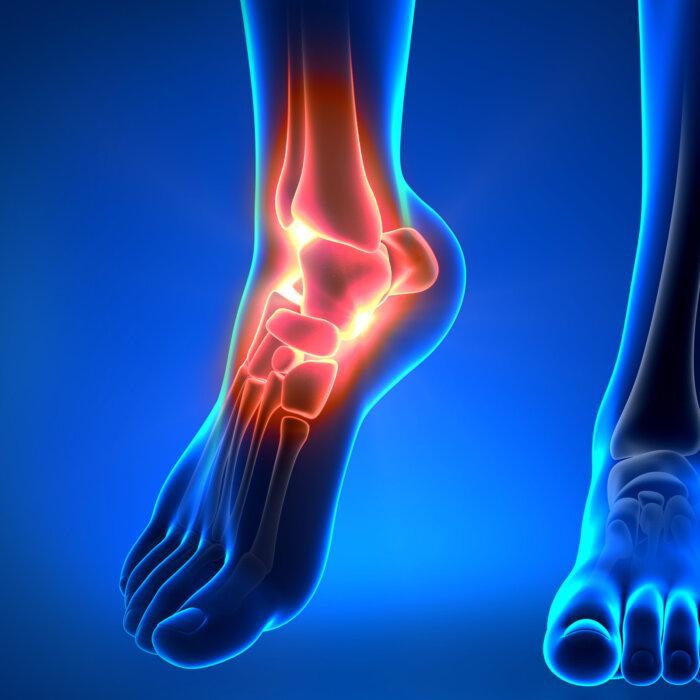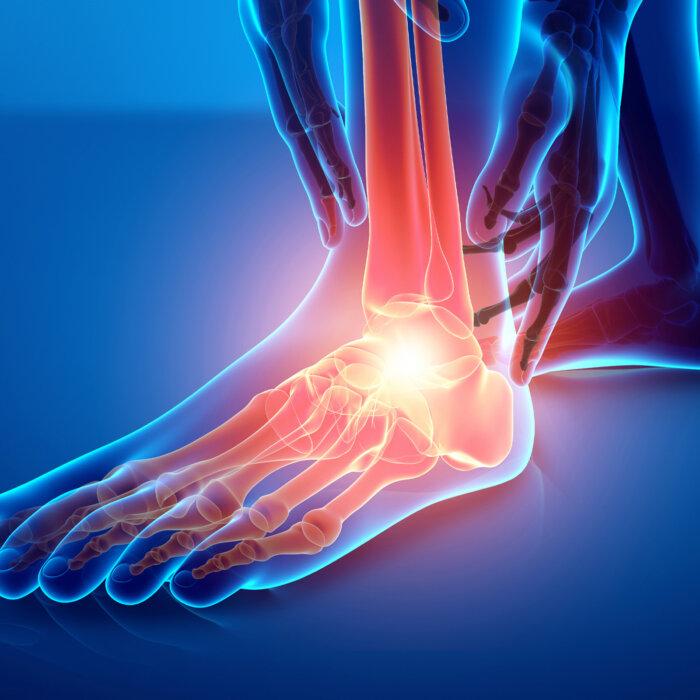Your ankles and surrounding muscles absorb a lot of force as you move throughout your day. If they’re weak, you'll be more susceptible to an injury such as a sprain, which can easily occur by rolling your ankle while playing sports, or simply stepping off a curb. An unexpected sprain can take you out of commission for weeks.
Ongoing ankle pain may be linked to injury to the bones, ligaments, or tendons, as well as different types of arthritis. Making sure the ankle has adequate support from surrounding muscles and tendons is key to its healthy function.
Ankle exercises can help you strengthen weak ankles and adjoining ligaments, which can prevent painful injuries and improve your mobility and stability. Maintaining strong ankles will also keep you from putting extra strain on your knees and hips.
The Muscle Groups of the Ankle
The ankle has two major muscle groups: the foot dorsiflexors on the front of the lower leg, and the foot plantar flexors on the back of the lower leg.Foot Plantar Flexors
Plantar flexion occurs when you point your toes or stand on the tips of your toes with activities such as:- Standing on the tip of your toes to reach for something high.
- Pressing down on the gas pedal of your car while driving.
Foot Dorsiflexors
Foot dorsiflexors allow you to flex your foot in the“dorsal” or upward direction, bending the ankle toward your shin.Full ankle dorsiflexion is essential to maintaining good posture and for movements like walking, running, jumping, and squatting.
Common Causes of Ankle Pain
The ankle is a complex arrangement of muscles, tendons, and ligaments. Many things can contribute to ankle pain, but experiencing pain in otherwise healthy ankles can often be attributed to functional patterns and muscle weakness, explained Mr. Kodikalla.Functional Patterns
- Excessive running or jumping can put considerable compressive force on the ankle and can provoke pain.
- Walking on uneven surfaces with weak ankle muscles and tendons can create problems, especially with repetitive movements.
- Improperly fitting shoes without adequate support can put stress on your ankles, making them more prone to weakness and injury.
- A sedentary lifestyle will allow the ankle muscles and tendons to weaken, making you more susceptible to injury.
Muscle Weakness
Ankle pain can often originate from muscle weakness. For example, weak plantar flexor muscles can lose their ability to support the foot and ankle during walking and running, creating alignment imbalances that eventually can lead to painful conditions, explained Mr. Kodikalla.Exercises to Strengthen the Ankles
Mr. Kodikalla recommends doing bodyweight exercises to strengthen the ankles since when performed properly, they are very effective and allow you to exercise anywhere.Sitting Alphabet
The sitting alphabet exercise is a fantastic way to engage all of the tendons, ligaments, and muscles that support the ankles.It’s best to start with this exercise to warm up before doing other exercises, said Mr. Kodikalla.

Resist using your leg to do all of the movements. Instead, try to use your ankle for as many of the movements as possible. Don’t bounce or rush the movements; instead, take two to three seconds to write each letter. Try to be accurate with the letters.
Standing Calf Raise
The standing calf raise focuses on the plantar flexors on the back of the calf, especially the gastrocnemius and soleus muscles, which are critical for pushing through the end of leg travel during walking and running.
Be sure not to bounce or rush the movements. Pay attention to your body and don’t push into pain or discomfort.
Standing Single-Leg Heel Raise
Similar to the standing calf raise, this exercise works the same muscles but boasts considerably higher intensity because it is performed on only one leg instead of two.
Take a second to move in either direction and don’t bounce or rush the movements. This exercise places considerable demands on your calf muscles, so listen to your body and don’t push into pain or discomfort.
Single-Leg Towel Stance
Instead of targeting a specific muscle, this advanced exercise effectively targets every part of the ankle. The single-leg towel stance is an advanced activity that provides small, fast-paced balance movements.
Keep your hands close to the stabilizing surface at all times to maximize your safety.
This exercise can be quite challenging at first, so don’t give up if it’s difficult—the more you do it, the easier it will become.
Seated Toe Raises
While several of these exercises focus on the muscles on the back of the lower leg, seated toe raises focus on the dorsiflexor muscles in front, especially the tibialis anterior, which will help you to increase your ability to raise your foot during walking and running.
Don’t bounce or rush the movements. Take a second to move in either direction and be sure you lift your toes all the way up in order to get the most out of this exercise.
You can make this exercise more challenging by resting the heel of one foot on the toes of the foot being exercised.
While it’s important to pay attention to functional patterns that may be responsible for ankle problems, being proactive by doing exercises to strengthen your ankle muscles can go a long way. Performing these exercises at least three times per week will help prevent painful injuries, improve your mobility and stability, and will put less strain on your hips and knees.
*If you have health or mobility issues that may present problems, consult with your physician before commencing exercise activity.













